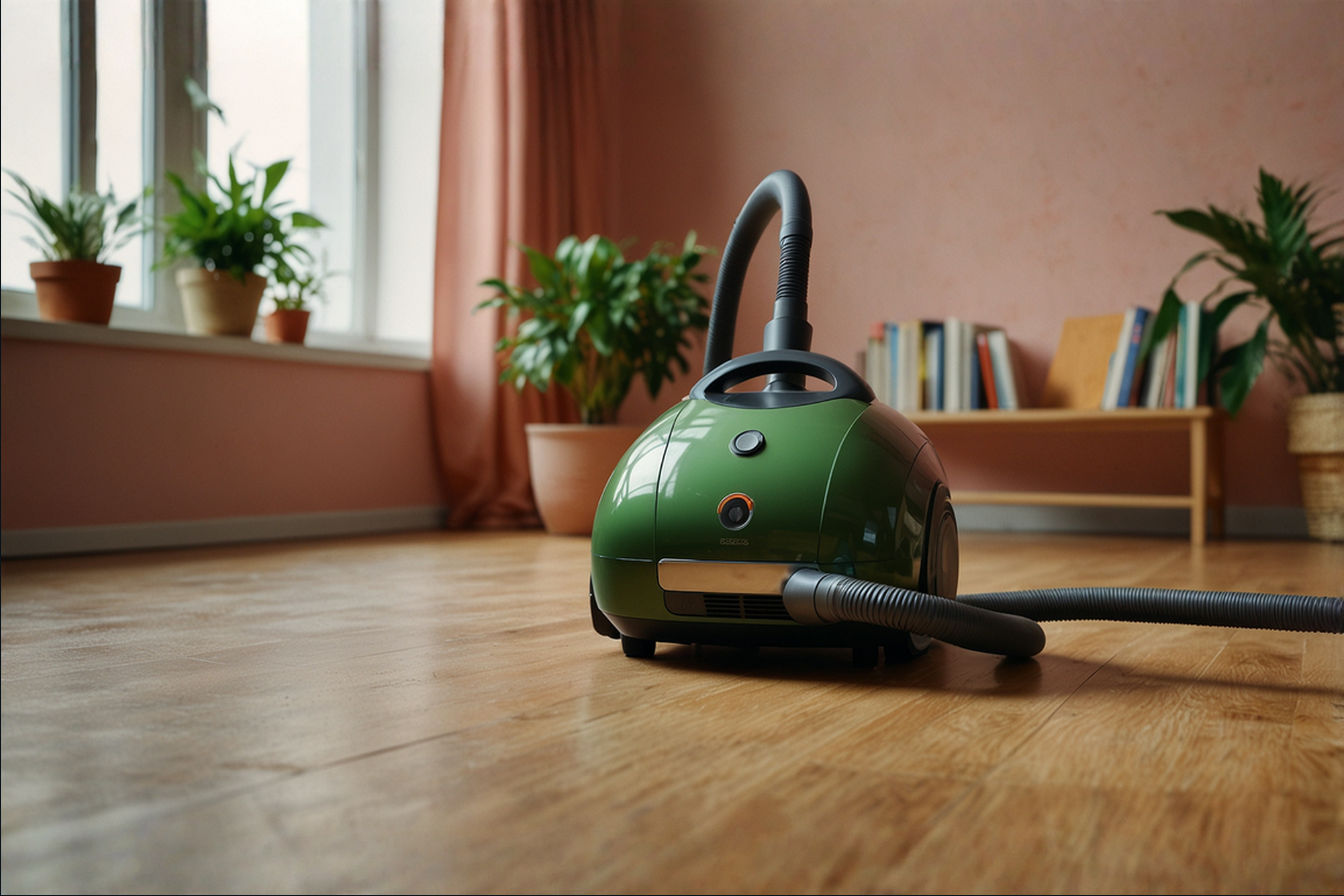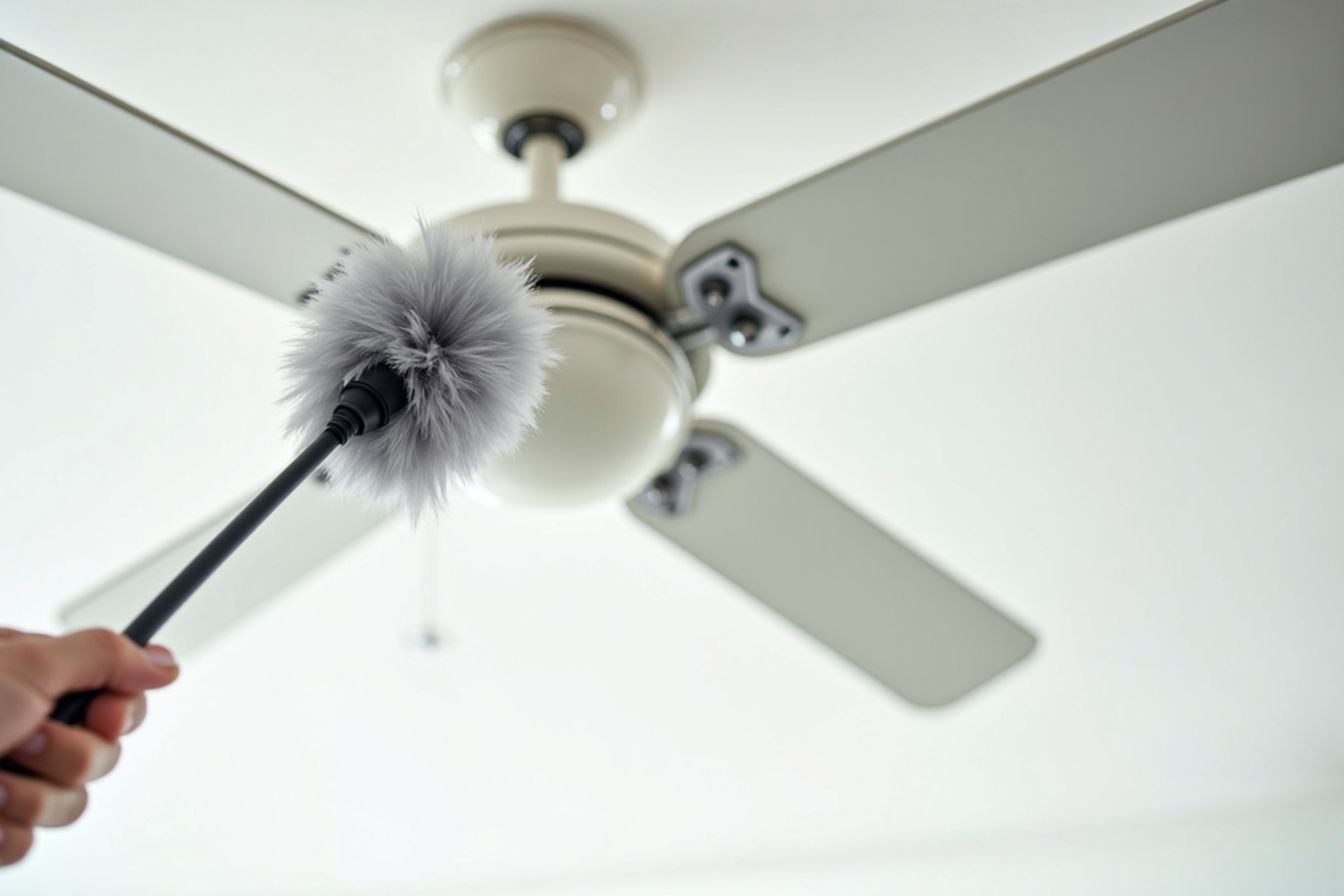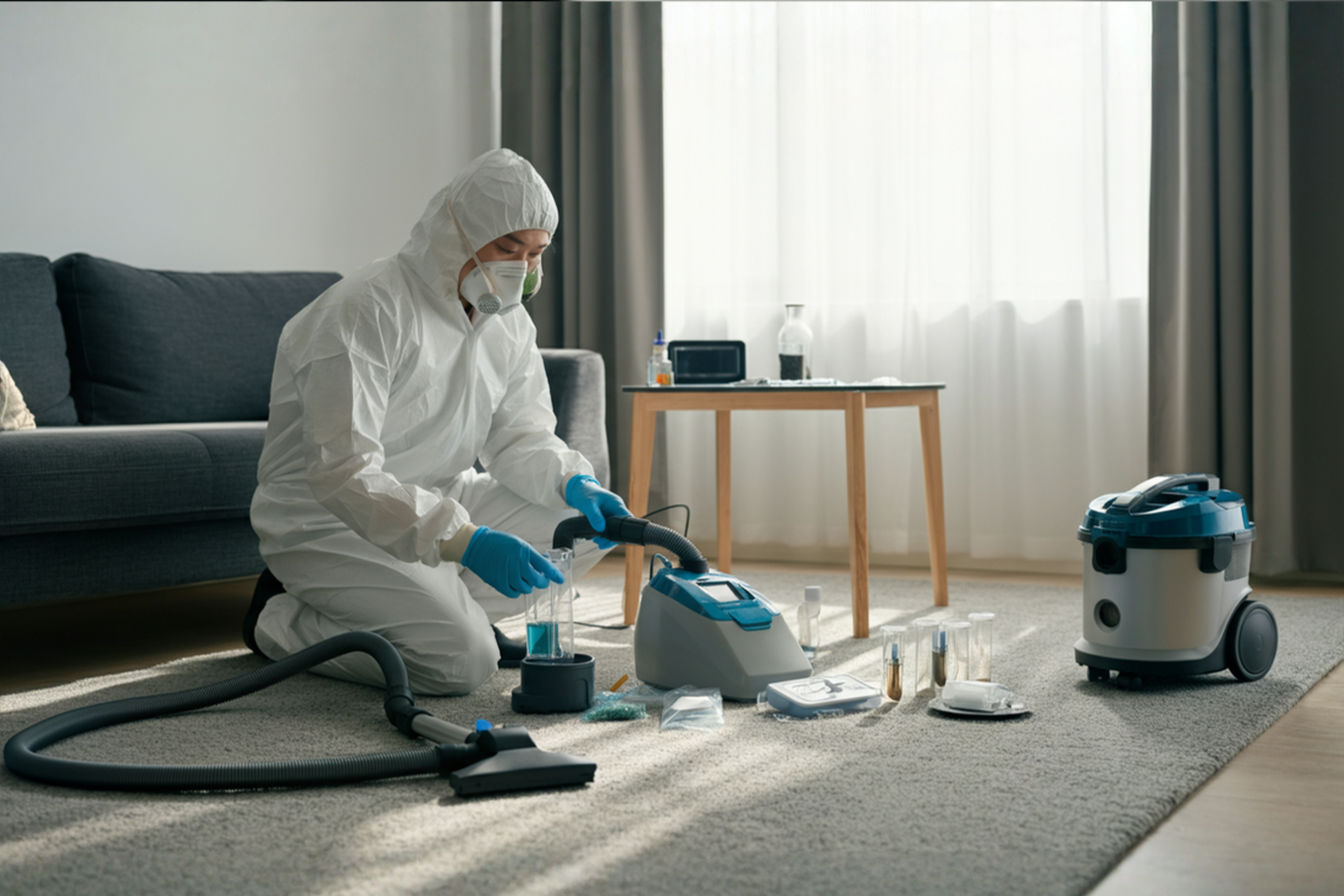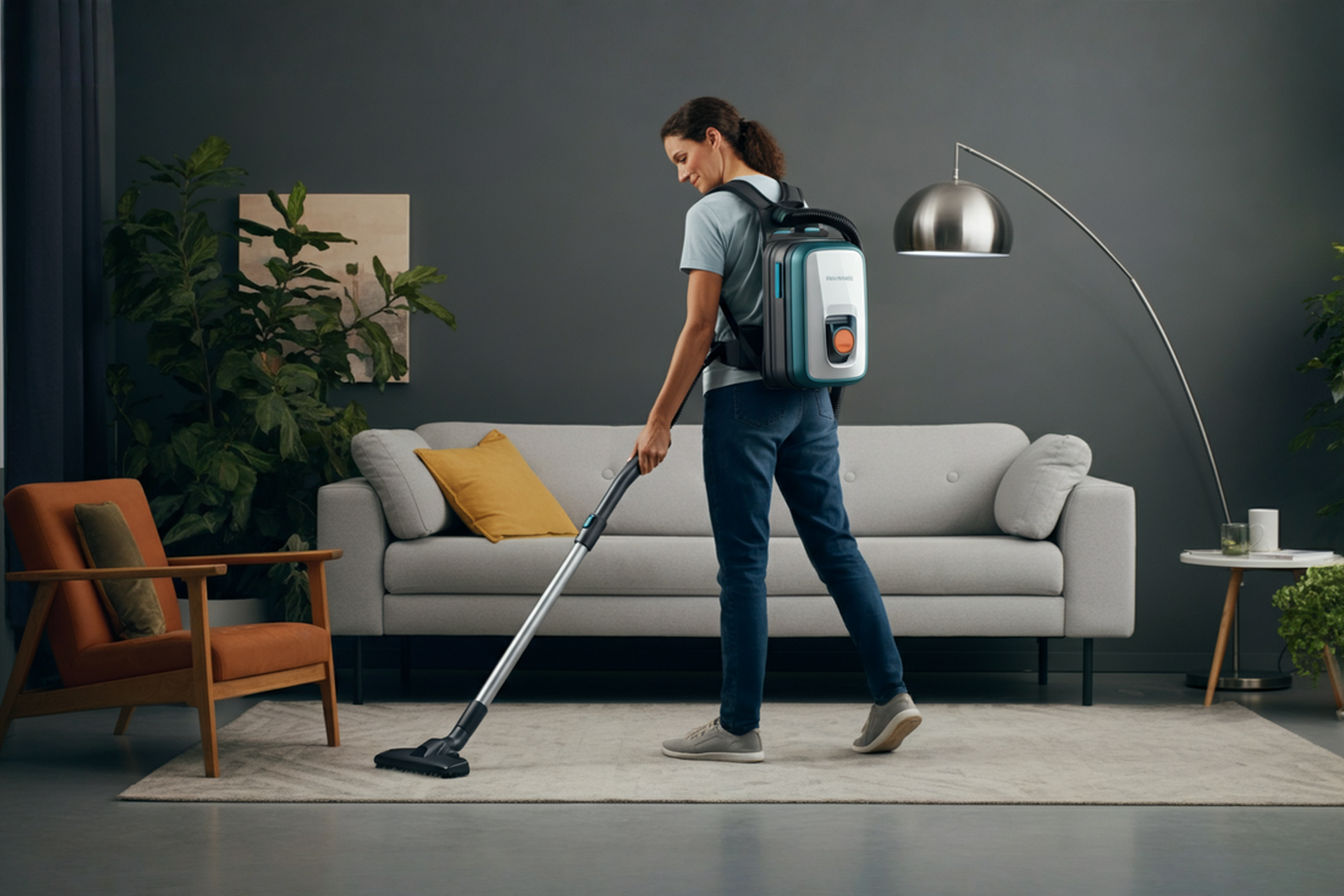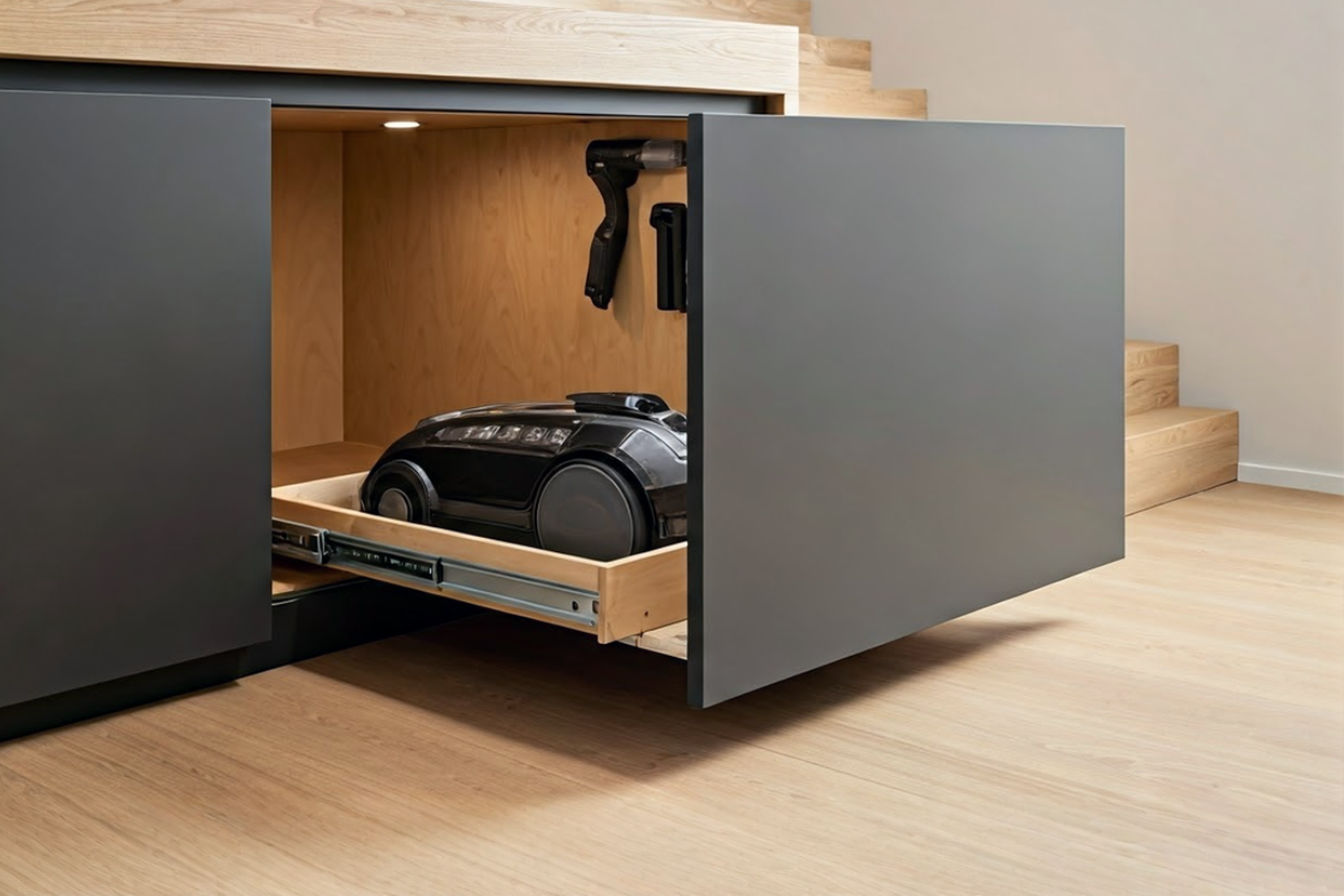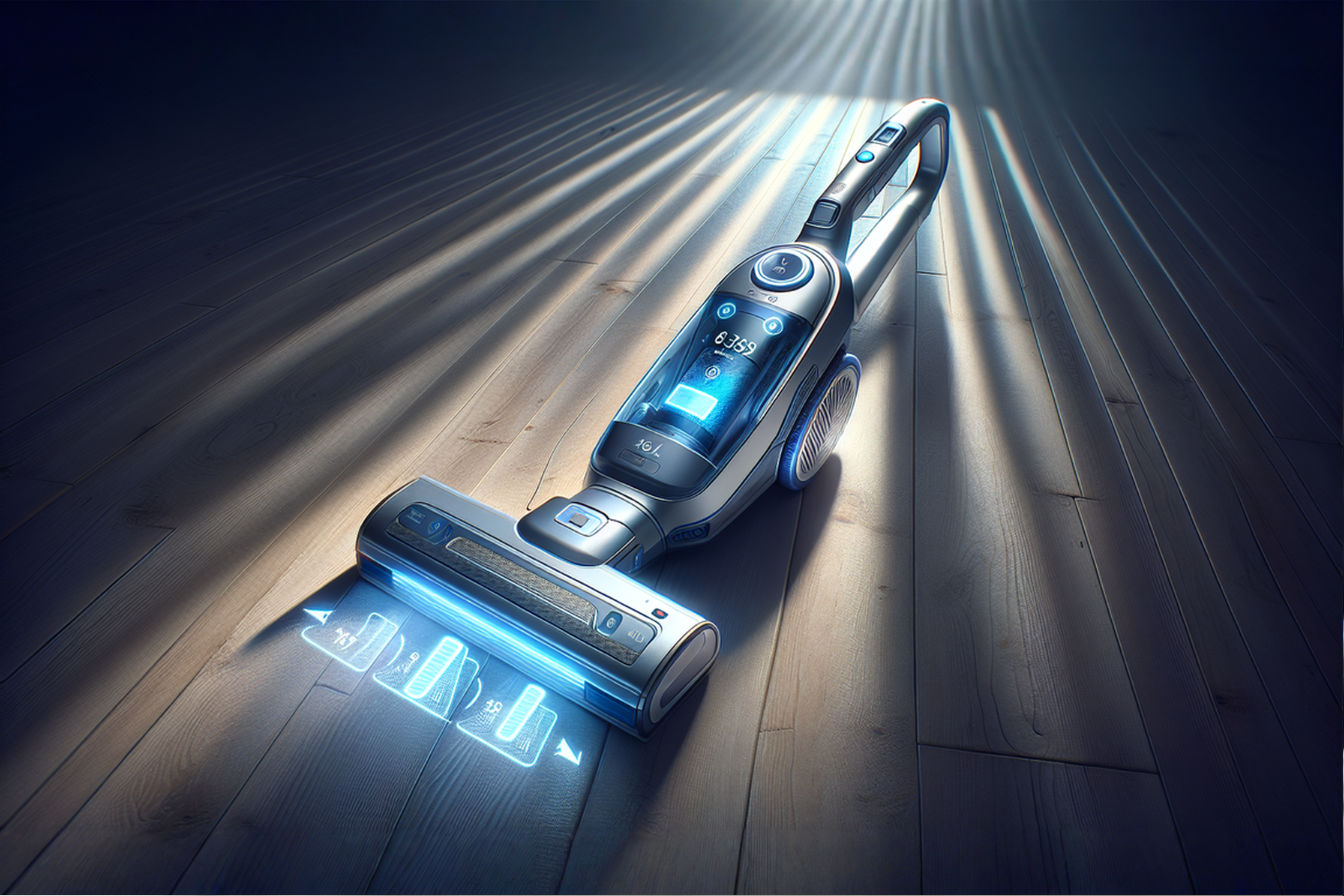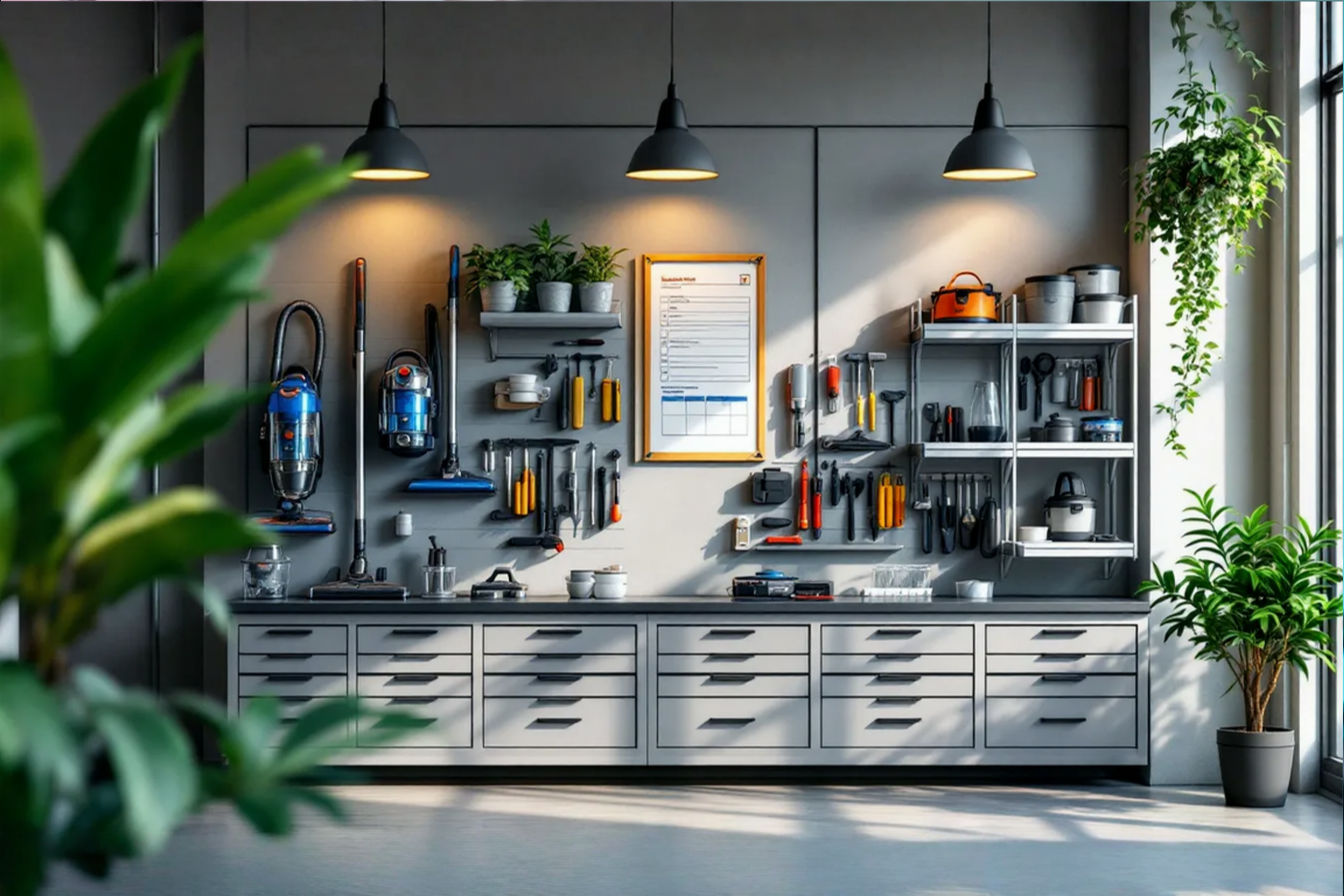Vacuum Sustainability Audit: Assessing and Improving Your Cleaning Footprint
Your vacuum cleaning routine impacts the environment more than you think. Learn how to assess your cleaning footprint and implement simple changes for more sustainable household cleaning.
This post may contain affiliate links. If you make a purchase through these links, we may earn a commission at no additional cost to you.
The hum of a vacuum cleaner resonates through millions of homes daily, yet few consider the environmental implications of this common household activity. Your cleaning routine—particularly vacuum use—creates what environmental experts call a “cleaning footprint,” encompassing energy consumption, waste generation, and resource utilization. This footprint extends beyond just electricity use, including manufacturing impacts, material sustainability, maintenance practices, and eventual disposal of your vacuum cleaner.
Conducting a vacuum sustainability audit provides valuable insights into how your cleaning practices affect the environment. This assessment helps identify opportunities to reduce environmental impact while maintaining cleanliness standards. By examining your vacuum habits now, you can make informed decisions that benefit both your home and the planet.
In this comprehensive guide, you’ll discover how to evaluate your current vacuum’s environmental impact, implement energy-efficient cleaning strategies, extend your device’s lifespan, and make more sustainable choices when purchasing new equipment. The journey toward more eco-conscious cleaning begins with understanding where you stand today.
Understanding Your Vacuum’s Environmental Impact
The environmental footprint of vacuum cleaning spans multiple dimensions that many homeowners never consider. Your cleaning device impacts the planet from production to disposal.
Energy consumption represents the most obvious environmental factor. A typical vacuum cleaner draws between 500 and 3000 watts during operation—comparable to running several computers simultaneously. This energy use translates directly to carbon emissions, particularly in regions reliant on fossil fuels for electricity generation. Even energy-efficient models contribute to environmental impact through regular use over time.
Manufacturing processes create significant environmental burdens before your vacuum ever reaches your home. The production of plastic components, metal parts, motors, and electronic elements requires extensive resource extraction, processing, and assembly—often in facilities powered by fossil fuels. Your device’s embodied carbon—the total greenhouse gas emissions from its production—may exceed the emissions from years of operation.
Waste generation continues throughout your vacuum’s lifecycle. Disposable bags, filters, belts, and other replacement parts create a steady stream of materials headed for landfills. Traditional vacuum bags typically contain multiple materials including paper, plastic, and sometimes metal components that complicate recycling efforts.
Transportation factors further increase environmental impact, as vacuums and their components often travel thousands of miles from manufacturing facilities to distribution centers to retail locations before reaching consumers. This global supply chain adds significantly to the product’s carbon footprint.
Understanding these interconnected impacts provides essential context for evaluating your current cleaning practices and identifying opportunities for improvement.
Conducting Your Vacuum Sustainability Audit
Assessing your vacuum’s environmental performance requires examining multiple factors. This evaluation provides a baseline for improvement and helps prioritize sustainability efforts.
Begin by documenting your current vacuum’s specifications. Note the model, age, power rating (watts), filtration system, and whether it uses bags or operates bagless. These details influence energy consumption and waste generation. Power rating particularly deserves attention, as higher wattage doesn’t necessarily indicate better cleaning performance but definitely increases electricity usage.
Track your usage patterns for two weeks, recording:
- Frequency of vacuum sessions
- Duration of each cleaning session
- Which rooms receive regular vacuuming
- Settings used (if your model offers multiple power levels)
This usage inventory reveals opportunities to optimize cleaning routines without sacrificing cleanliness. Many households vacuum certain areas more frequently than necessary, wasting energy and accelerating wear on their devices.
Examine your maintenance practices next. When did you last replace the filter or bag? How often do you clean the brushroll? Do you address performance issues promptly or continue using an inefficient machine? Poor maintenance significantly reduces efficiency, forcing the motor to work harder and consume more electricity for the same cleaning result.
Analyze your disposal habits for vacuum-related waste. Are you discarding items that could be cleaned and reused? Do you research recycling options for vacuum components? Have you investigated whether your manufacturer offers recycling programs?
Calculate a baseline sustainability score using these factors:
- Energy efficiency rating of your current model
- Weekly electricity consumption from vacuuming
- Monthly waste generation from bags, filters, and parts
- Maintenance regularity score
- Disposal responsibility score
This composite score establishes your current cleaning footprint and helps measure progress as you implement improvements.
Energy Efficiency: The Core of Sustainable Vacuuming
Energy efficiency stands as the foundation of sustainable vacuum use, reducing both environmental impact and operating costs. Understanding how power relates to performance helps make informed decisions about vacuum purchase and operation.
The relationship between wattage and cleaning effectiveness frequently confuses consumers. Manufacturers historically promoted high-wattage models (1800-2200 watts) as superior performers, yet research demonstrates little correlation between power consumption and cleaning ability above certain thresholds. Modern efficient designs often clean more effectively at 800-1200 watts than older models consuming twice that power.
European regulations now limit vacuum cleaners to 900 watts maximum, spurring innovation in motor design and airflow efficiency. These restrictions have encouraged manufacturers to develop models that achieve excellent cleaning results with significantly reduced energy requirements.
Suction efficiency—rather than raw power—determines cleaning performance. Well-designed vacuums with optimized airflow paths, properly sealed systems, and effective agitation methods clean thoroughly while consuming less electricity. Motor technology advances have enabled manufacturers to create units that maintain strong suction with reduced power requirements.
Your usage patterns dramatically influence energy consumption. Running the vacuum at full power for all surfaces wastes electricity unnecessarily. Models with variable power settings allow adjustment based on cleaning needs—lower settings for hard floors and higher power only when needed for deeply embedded dirt in carpets.
Simple habit changes further reduce energy use without compromising cleanliness:
- Vacuum during daylight hours to avoid turning on additional lighting
- Clean high-traffic areas more frequently while reducing cleaning frequency in rarely used spaces
- Maintain proper technique, making slow, deliberate passes rather than rushing (which requires repeated cleaning)
- Address spills immediately with targeted cleaning rather than vacuuming entire rooms
These approaches minimize energy consumption while maintaining cleanliness standards and extending your vacuum’s operational lifespan.
Extending Your Vacuum’s Lifespan
Maximizing your vacuum cleaner’s functional life represents perhaps the most impactful sustainability strategy. Every additional year of service prevents manufacturing impacts from replacement units and reduces disposal issues.
Regular maintenance significantly extends operational life while improving performance. A well-maintained vacuum functions more efficiently, consuming less energy while delivering better cleaning results. This virtuous cycle reduces both immediate environmental impact and long-term resource consumption.
Establish a comprehensive maintenance schedule based on manufacturer recommendations and usage patterns:
- Empty bags or dust containers when they reach 2/3 capacity (not completely full)
- Wash or replace filters according to the recommended schedule
- Clean brush rolls weekly to remove hair and thread that increase motor strain
- Check and replace belts when they show signs of wear
- Inspect hoses and attachments for blockages that reduce efficiency
- Clean exterior surfaces to prevent dust buildup in motor vents
Addressing performance issues promptly prevents cascade failures where one compromised component damages others. The slight noise change, reduced suction, or unusual smell often signals developing problems that, when corrected early, prevent catastrophic failures requiring complete replacement.
Repair rather than replace whenever possible. Many vacuum issues involve simple, inexpensive parts like belts, filters, or brushes that consumers can often replace themselves. Independent repair shops can address more complex problems at a fraction of replacement cost. This approach reduces manufacturing impacts and keeps functional components from entering waste streams prematurely.
The environmental benefits of extended vacuum lifespan are substantial. Manufacturing a typical vacuum cleaner generates approximately 20-25 kg of CO2 equivalent emissions. Doubling your device’s service life effectively halves this manufacturing impact while reducing waste generation and resource consumption.
Sustainable Vacuum Features and Technologies
Modern vacuum designs incorporate various features that impact environmental performance. Understanding these elements helps consumers make informed choices when purchasing new equipment.
Filtration systems significantly influence both cleaning effectiveness and environmental impact. HEPA filtration captures 99.97% of particles 0.3 microns or larger, improving indoor air quality while reducing outdoor particulate release. However, these advanced filters require regular replacement unless designed for washing and reuse. Evaluate filtration based on performance, replacement frequency, and whether components can be recycled.
The bagged versus bagless debate involves complex environmental tradeoffs. Bagged systems generate ongoing waste but often provide superior filtration and cleaner emptying. Bagless models eliminate bag waste but typically require more frequent filter cleaning or replacement and may release more dust during emptying. The environmental equation depends on specific design, usage patterns, and local waste management systems.
Material selection varies widely among manufacturers. Leading sustainable brands incorporate recycled plastics, minimize toxic components, and design for eventual disassembly and recycling. Some premium manufacturers now produce vacuum bodies using up to 75% recycled materials, significantly reducing virgin resource demands.
Battery-powered cordless vacuums present particular sustainability challenges. While eliminating cords improves convenience and may reduce tripping hazards, battery production involves environmentally intensive mining operations and complex manufacturing processes. Lithium-ion batteries contain valuable materials that require proper recycling to recover. Consider battery-powered models only when their convenience truly justifies the additional environmental impact.
Motor technology continues advancing toward greater efficiency. Brushless DC motors last longer, generate less heat, and consume less electricity than traditional designs. These advanced motors maintain consistent performance throughout the vacuum’s lifespan rather than gradually degrading.
Noise reduction features benefit both users and the environment. Quieter operation encourages more appropriate cleaning frequency rather than postponing necessary vacuuming due to noise disturbance. This pattern ultimately improves cleanliness while potentially reducing intensive, extended cleaning sessions.
Eco-Friendly Vacuum Brands and Certifications
Several manufacturers have made sustainability central to their product development and corporate philosophy, offering consumers environmentally preferable alternatives to conventional models.
Leading sustainable vacuum manufacturers implement comprehensive approaches including:
- Designing for durability and repairability
- Using recycled and recyclable materials
- Reducing energy consumption through efficient motors
- Minimizing packaging waste
- Offering extended warranties
- Providing repair services and spare parts availability
- Operating take-back and recycling programs
Third-party certifications help consumers identify genuinely sustainable products amid marketing claims. Look for recognized environmental standards rather than relying solely on manufacturer assertions:
- Energy Star certification indicates superior energy efficiency
- EPEAT registration evaluates environmental attributes across the product lifecycle
- EU Energy Label provides standardized efficiency ratings
- Blue Angel (Germany) and Nordic Swan (Scandinavia) certify reduced environmental impact
- Cradle to Cradle certification assesses material health, recyclability, renewable energy use, water stewardship, and social fairness
These certifications involve rigorous testing and verification by independent organizations, providing reliable guidance beyond marketing claims.
When evaluating green marketing claims, exercise healthy skepticism. Terms like “eco-friendly” and “green” lack standardized definitions and may indicate minimal environmental improvements rather than comprehensive sustainability. Research specific environmental attributes rather than responding to general claims.
Price considerations often influence sustainable vacuum purchases. While environmentally preferable models sometimes carry premium prices, analyze total cost of ownership including:
- Energy costs over the product’s lifespan
- Replacement part expenses
- Expected service life
- Repair costs
- Disposal/recycling costs
This comprehensive analysis often reveals that higher initial investments in quality, sustainable models result in lower lifetime costs while reducing environmental impact.
Optimizing Your Cleaning Routine
Your cleaning habits influence environmental impact as much as your vacuum choice. Strategic approaches to routine cleaning can significantly reduce resource consumption while maintaining or improving cleanliness.
Appropriate cleaning frequency balances cleanliness needs with environmental considerations. Research demonstrates that most households can maintain healthy indoor environments without daily vacuuming of all spaces. Analyze your home’s traffic patterns and develop a targeted schedule:
- High-traffic areas: 2-3 times weekly
- Medium-traffic spaces: weekly
- Low-usage rooms: bi-weekly or monthly
This differentiated approach reduces energy consumption and vacuum wear while maintaining cleanliness standards where they matter most.
Complementary cleaning methods reduce vacuum reliance for certain tasks. Brooms efficiently clean hard floors with zero energy consumption. Dustpans and handheld brushes address small spills without powering up full-sized equipment. Microfiber dust mops capture dust and hair on hard surfaces without electricity or disposable materials.
Room-specific strategies further optimize cleaning efficiency:
- Use vacuum attachments appropriately rather than employing the main powerhead for all surfaces
- Clean room peripheries quarterly rather than weekly unless specific conditions demand otherwise
- Address visible soil immediately rather than waiting for scheduled cleaning
- Vacuum high places (ceiling corners, tops of door frames) seasonally instead of during routine cleaning
- Employ spot cleaning for spills rather than whole-room vacuuming
Seasonal considerations provide additional optimization opportunities. Spring and fall typically require more intensive cleaning due to pollen, tracked-in debris, and holiday preparations. Winter and summer often allow reduced cleaning frequency, particularly in homes without children or pets.
Proper technique significantly impacts both cleaning effectiveness and resource use. Slow, methodical vacuuming in straight, slightly overlapping paths removes more soil with fewer passes than hurried, random movements. This approach reduces both cleaning time and energy consumption while improving results.
Responsible Disposal and Recycling
Even the most durable vacuum eventually reaches the end of its useful life. Responsible end-of-life management prevents valuable resources from entering landfills while minimizing environmental harm.
Before disposal, evaluate whether repair remains viable. Many vacuums discarded for minor issues could continue functioning with simple repairs. Independent repair shops often restore supposedly “unrepairable” machines at reasonable cost. Only consider disposal when repair costs approach replacement value or parts become genuinely unavailable.
Donation provides an excellent alternative for working or repairable vacuums you no longer need. Many charitable organizations, including Goodwill, Salvation Army, and local shelters, accept vacuum cleaners in good condition. Some repair-focused organizations refurbish donated equipment for distribution to low-income households.
Component recycling significantly reduces environmental impact when vacuums truly reach end-of-life. Most vacuums contain valuable materials including:
- Motors (copper, aluminum, steel)
- Power cords (copper, rubber)
- Metal frames and components
- Certain plastic types
- Electronic circuit boards
Research local electronics recycling facilities that accept vacuum cleaners. E-waste recyclers extract valuable metals while properly managing potentially hazardous components. Some municipalities include vacuum cleaners in their electronics recycling programs, while others classify them with metal recycling or bulky waste.
Manufacturer take-back programs represent an emerging disposal option. Leading sustainable vacuum producers now offer recycling services for their products, sometimes providing shipping labels or drop-off locations. These programs ensure proper disassembly and materials recovery while providing manufacturers with insights for design improvements.
Proper handling of batteries demands special attention, particularly for cordless models. Lithium-ion, nickel-cadmium, and other battery types contain potentially hazardous materials requiring specialized recycling. Never dispose of vacuum batteries in regular trash; instead, utilize battery-specific recycling programs available at many electronics retailers.
Implementing Your Vacuum Sustainability Action Plan
Transforming your vacuum practices requires structured implementation rather than scattered improvements. A comprehensive sustainability action plan provides the framework for meaningful, lasting change.
Begin by establishing clear sustainability goals based on your audit results:
- Reduce vacuum energy consumption by X% within six months
- Extend current vacuum lifespan by Y years through improved maintenance
- Decrease cleaning-related waste by Z% annually
- Improve indoor air quality while reducing environmental impact
Prioritize actions based on environmental impact, implementation difficulty, and household needs. High-impact, low-effort changes typically provide motivation for more challenging modifications later.
Develop a realistic timeline for implementation rather than attempting all changes simultaneously:
Month 1:
- Implement optimized cleaning schedule
- Establish regular maintenance routine
- Research local recycling options for vacuum components
Month 2-3:
- Integrate complementary cleaning methods
- Address any deferred maintenance issues
- Begin tracking energy consumption and waste generation
Month 4-6:
- Research sustainable replacement options if needed
- Implement seasonal cleaning adjustments
- Evaluate progress against baseline measurements
Tracking progress maintains motivation and identifies areas needing adjustment. Simple spreadsheets or apps can monitor key metrics including:
- Energy used for vacuum cleaning
- Bags, filters, and parts replaced
- Maintenance activities completed
- Time spent cleaning
Regular progress reviews help refine your approach based on real-world results rather than assumptions.
Involving all household members improves sustainability outcomes. Conduct family meetings to explain environmental impacts and demonstrate improved techniques. Assign age-appropriate responsibilities for maintenance and cleaning tasks. Create visual reminders of proper practices until they become habitual.
Celebrate successes to maintain motivation. When data shows reduced energy consumption or extended vacuum lifespan, acknowledge these achievements. Small rewards for meeting sustainability targets encourage continued improvement while recognizing the effort involved in changing established habits.
Conclusion
Your approach to vacuum cleaning—seemingly mundane and insignificant—actually creates meaningful environmental impact when multiplied across millions of households. The choices you make regarding equipment purchase, maintenance, operation, and disposal contribute to your overall environmental footprint.
The vacuum sustainability audit process reveals opportunities for improvement that benefit both planetary health and household finances. Energy-efficient cleaning reduces utility costs while lowering carbon emissions. Extended equipment lifespan minimizes resource consumption and waste generation. Proper disposal ensures valuable materials return to productive use rather than occupying landfill space.
Remember that perfect sustainability remains unattainable; instead, focus on continuous improvement. Each positive change builds momentum toward more responsible consumption patterns and environmental stewardship. Your individual actions, combined with similar efforts across communities, create significant collective impact.
The journey toward sustainable cleaning practices represents one aspect of broader environmental responsibility. The awareness and habits developed through your vacuum sustainability efforts naturally extend to other household activities, creating expanding circles of positive influence. By thoughtfully assessing and improving your cleaning footprint, you contribute to environmental solutions rather than problems.

